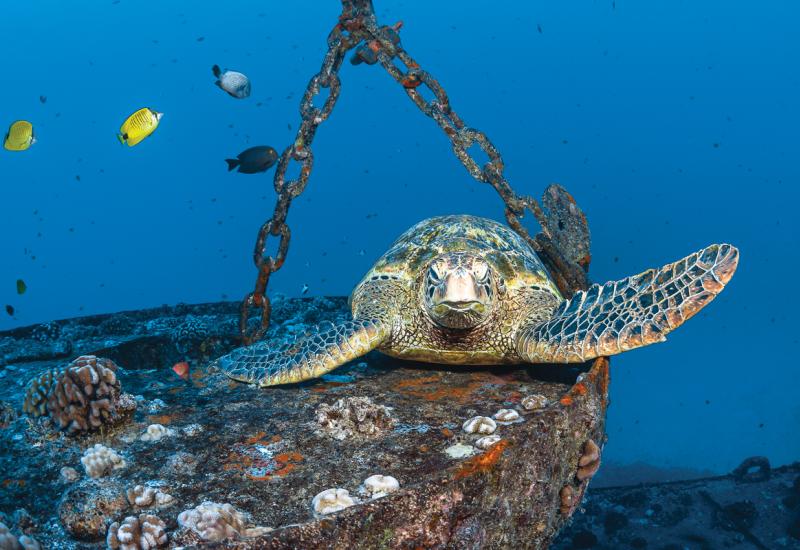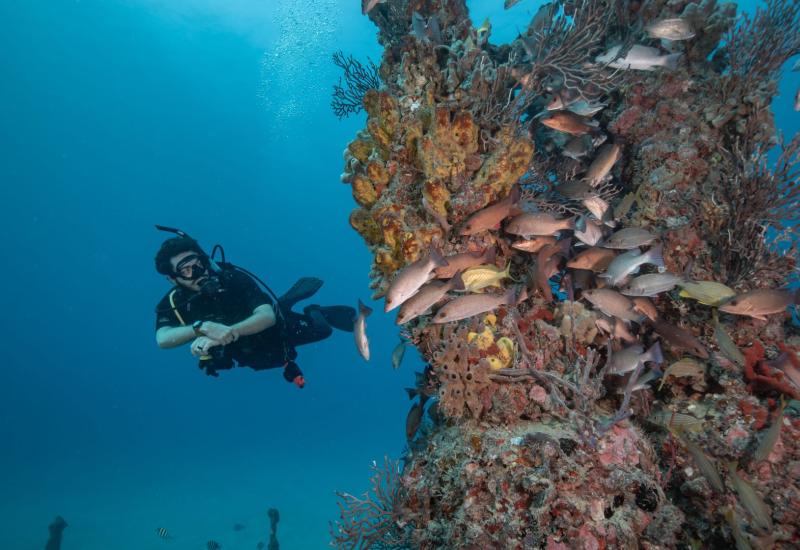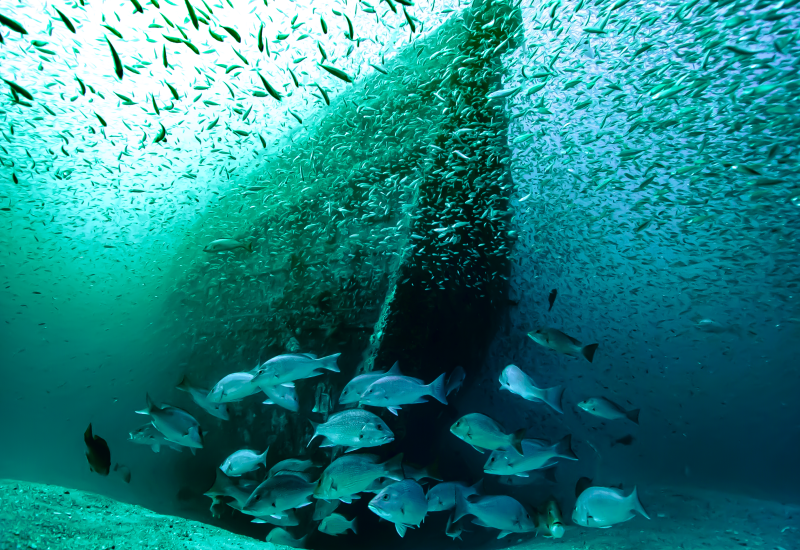History Of Australia's Yongala Shipwreck
The SS Yongala is considered one of Australia’s best wreck dives. On or about March 23, 1911, the luxury passenger steamship sank en route to Townsville during a cyclone. The ship disappeared with no survivors and its final resting place remained unknown for decades. It has since earned a reputation as the largest and most-intact wreck for scuba divers in Australian waters.
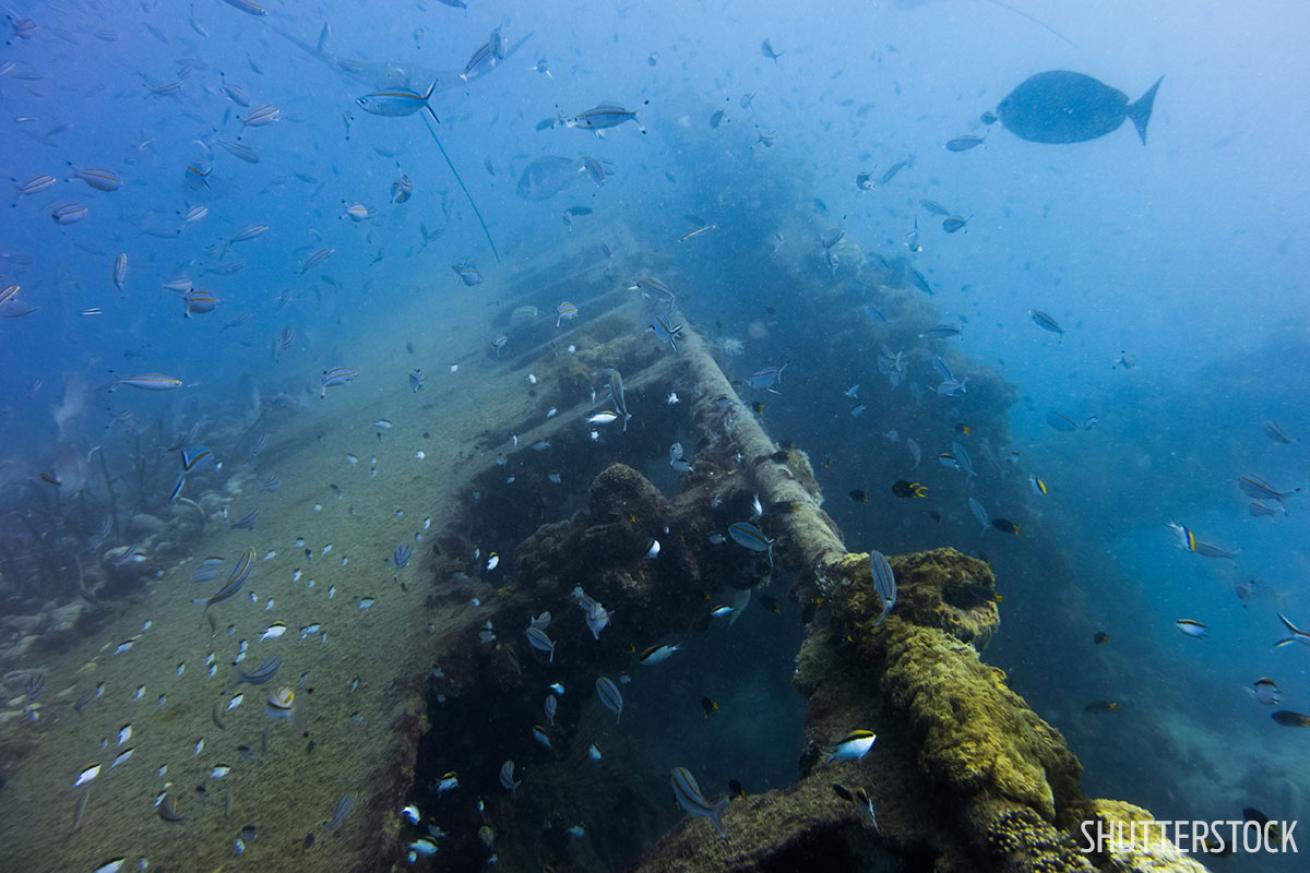
ShutterstockThe SS Yongala disappeared for decades only to be rediscovered as a shipwreck worthy of any scuba diver's bucket list.
A Brief History of the Yongala
The most complete collection of information about the ship comes from the Townsville Maritime Museum. Yongala was a luxury passenger ship built in England in 1903 for the Adelaide Steamship Company (ASSCo). It was named after a local Aboriginal word for “broad water”; using local words was a traditional naming convention of ASSCo’s. The 350-foot long ship relied on a large triple expansion engine that drove a single propeller to achieve an official speed of 15.8 knots, though it often reached speeds of up to 17 knots.
It spent its brief lifetime ferrying travelers around the Australian continent. The Australian National Shipwreck Database reports that it first ran roundtrip routes from Sydney to Fremantle. Later it would run from Brisbane to Fremantle. In fact, the Townsville Maritime Museum says that it was the first vessel to make this 3,000-mile journey, the longest such trip at the time. During the winter months, the ship made an east coast run between Melbourne and Cairns. It was on one of these wintertime voyages that the Yongala met its fate.
Into the Storm
After 98 successful voyages in Australia’s South Pacific waters, the Yongala began its final run on March 14, 1911. The steamship unloaded 50 tons of cargo and secured the rest in the lower hold after it arrived in MacKay. The Townsville museum makes mention of a particularly unique item included on the ship’s manifest — a racehorse named Moonshine. In addition to the equine excursionist, Yongala was carrying 49 passengers and 73 crew members when it departed for the next leg of its journey on March 23. But instead of ferrying those 122 souls to Townsville it would only bring them to an early grave.
While the Yongala was still within sight of land, the local Flat Top station received a telegram warning of a cyclone between MacKay and Townsville, and it sent both flag and wireless signals, prompting several ships to take refuge at Mackay. Yongala did not see the flags, and did not have wireless equipment. This was not unusual; even though shore-based wireless stations were able to communicate with ships since 1910, most ships at the time did not carry wireless equipment. The Townsville museum notes that, “Ironically, a wireless destined for installation in Yongala had recently dispatched from the Marconi company in England.”
The last sighting of the Yongala was approximately five hours later at Dent Island. The lighthouse keeper watched as the ship steamed into Whitsunday Passage and worsening weather. The ship would not be seen again until its final resting place was discovered more than 40 years later.
Yongala Lost
The Yongala was not immediately missed when it failed to arrive in Townsville on schedule. The storm had impacted a number of vessels that had been delayed after seeking shelter, including the passenger ship Cooma. But after the Cooma and other ships that had also departed from MacKay began to arrive following the storm, it became clear that something had happened to Yongala. The ship was officially listed as missing on March 26, but it had likely been lost a few days prior, on the 23rd.
A search operation was soon underway involving the public service, police force and other shipping vessels. Though Yongala was way past due, there was still hope it was simply delayed by a mechanical failure or that it was sheltering near the outlying islands of the Barrier Reef or perhaps it had run out to sea to escape the cyclone.
The washed-up cargo that was found along the coast from Hinchinbrook Island to Bowen told a different story. The Grey River Argus, a local paper, reported that “the wreckage found at Cape Bowling Green consists of bags of chaff, pollard, bran, pumpkins, and they are recognized as part for the cargo shipped by the Yongala in the lower hold at Brisbane.”
The Queensland government offered a £1,000 for any information leading to the ship’s discovery, but eventually withdrew the offer when nothing was found. The Townsville Maritime Museum reports that “the only body ever found was the racehorse Moonshine, washed up at the mouth of Gordon Creek.”
Caught in the storm, it was surmised that the ship had been pushed toward a low-water reef and struck. Blinding winds would have made it impossible to lower life boats as the ship was ground upon the rocks and it would have sunken quickly into the deep water.
The Marine Board of Queensland made in inquiry into the loss of the Yongala, but could find no satisfactory explanation. The vessel’s construction met all standards and specifications of ASSCo and it had earned a reputation as a solid, stable and altogether seaworthy ship over the last several years.
Likewise, for the captain — William Knight — who had a proven track record following a 14-year history of service without incident. Witnesses called to testimony described him as “a careful and experienced master.”
The Townsville museum recorded that after finding no fault in the ship or its captain the board concluded that any further discussion would be fruitless and “with no desire to indulge in idle speculation, simply find that after becoming lost to view by the light keeper at Dent Island, the fate of the Yongala passes beyond human ken into the realms of conjecture, to add one more to the mysteries of the sea.”
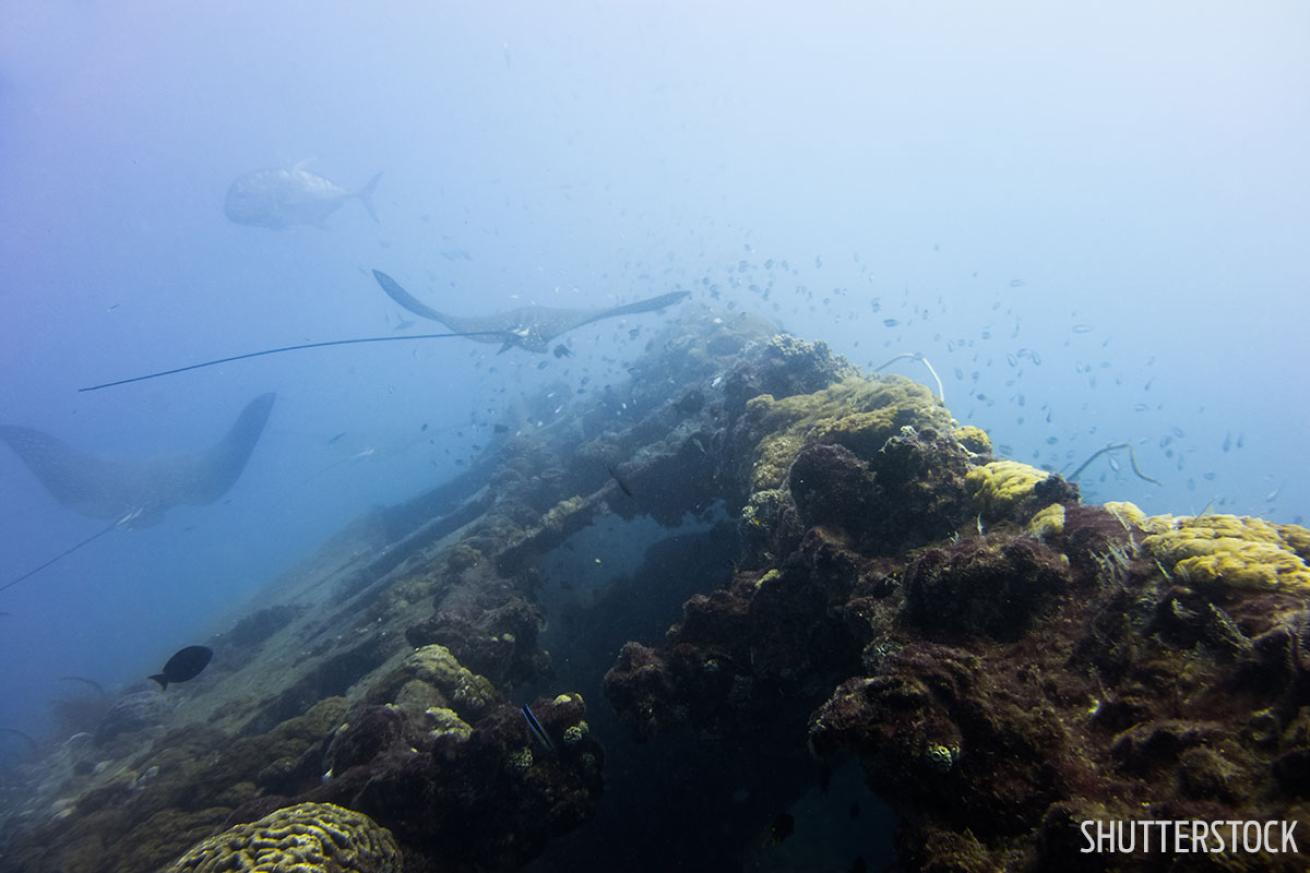
ShutterstockThe Yongala sank during a cyclone on its way to Townsville in 1911.
The Yongala Is Found
The Yongala remained undiscovered and undisturbed until the beginning of WWII, when a Royal Australian Navy minesweeper fouled an obstruction in the shipping lanes between Brisbane and Townsville in 1943. The missing ship was mistaken for a shoal, and the corvette pressed on without further investigation.
In 1947, the HMAS Lachlan, a Royal Australian Navy hydrographic vessel, stopped to conduct its own brief investigation of the unidentified object on its way north. Lachlan determined the obstruction was most likely a shipwreck using an echo-sounder and anti-submarine equipment. Though it was believed to be that of the long-lost Yongala, no effort was made to positively ID the ship for 11 more years.
In 1958, a local fisherman named Bill Kirkpatrick relocated the wreck in hopes of making a salvage claim. His efforts were unsuccessful, but he was later asked by the president of the Queensland Underwater Research Group of Townsville and professional diver Don McMillan to take researchers to the site. Kirkpatrick agreed to transport QURG members to the wreck so that they could determine if it was in fact the Yongala. The group retrieved a safe, among other artifacts, which they hoped would contain documents that could identify the ship.
However, when they opened the safe, they found nothing but black sludge. After photographs of the safe circulated in the Townsville Daily Bulletin in October 1958, the Queensland manager of Chubb & Sons Lock and Safe Company (now named Chubbsafes) recognized it as a Chubb’s model and sent the partial serial number of the safe to England to see if they could find a match. The serial number matched the Chubb safe that had been bought for use onboard Yongala — confirming the wreck’s identity and Yongala’s final resting place.
One More Lost Soul
The Yongala claimed an additional victim on October 22, 2003, when newlywed Tina Watson drowned during her honeymoon. CNN reports that she was still an inexperienced scuba diver and ran into complications during the dive. Her husband of 11 days, Gabe Watson, panicked and swam to the surface after Tina started to sink to the bottom. Queensland authorities maintained that the dive accident was in fact a premeditated murder and that Watson abandoned his wife underwater after turning off her air long enough for her to drown. Soon dubbed the “honeymoon killer,” he spent 18 months in jail in Queensland for negligent manslaughter and faced an additional trial in Alabama — one that was eventually dismissed due to lack of evidence.
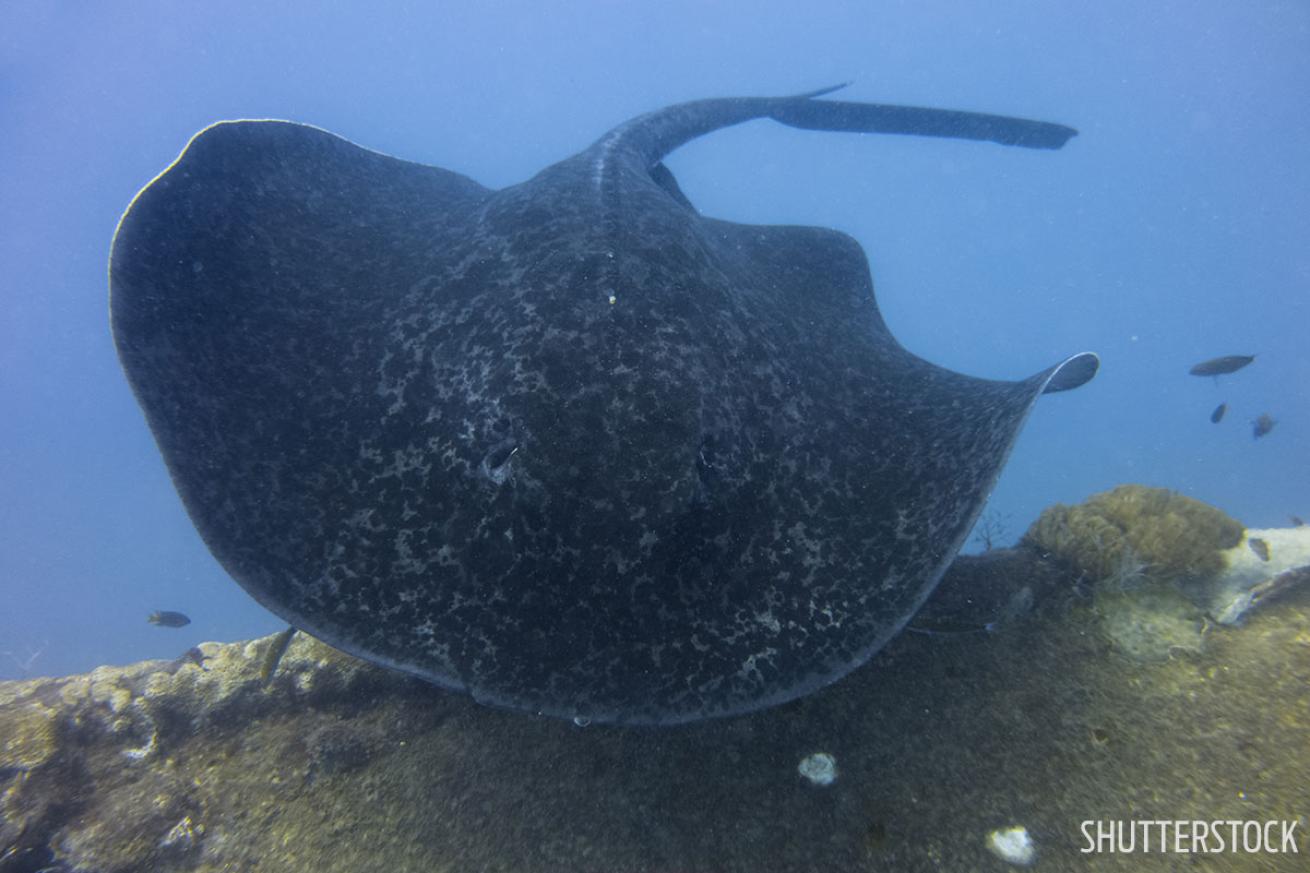
ShutterstockThe wrecks isolated location has made it a magnet for marine life, from smaller tropical fish to larger pelagics.
Scuba Diving the Yongala
The Yongala is situated inside of the Great Barrier Reef Marine Park approximately 48 nautical miles from Townsville. It rests on the open sandy bottom with a slight list to starboard and the bow still pointing north. The ship’s superstructure remains intact, although some decks have fallen off the main deck. The wreck is protected under the Historic Shipwrecks Act of 1976, so penetration is forbidden. The wreck is considered an advanced dive due to strong currents and its remote location.
The wreck’s isolation has also made it a magnet for marine life. Every inch is teeming with life, from the soft corals covering the hull and the swarms of teeny tropical fish to giant trevally and schools of barracuda. Sea turtles, sharks, sea snakes, mantas and eagle rays are all common sights in this undersea mecca. In cooler months, you may even encounter humpback whales.
Depth: The wreck sits between 52 and 98 feet.
Visibility: Viz ranges from 50-80 feet in winter and 30-50 in spring and summer.
Temperature: From June to September, temperatures range from 72-77 degrees Fahrenheit and from December to March, they fall between 79-88 degrees.
Need to know: Due to this wreck’s protected status, access is by permit only, so make sure you use a licensed operator. That also means you are not allowed to touch or penetrate the wreck. Due to currents, this is an advanced dive.
Operators: You can catch dive charters out of Townsville (Adrenalin Snorkel Dive) and Ayr (Yongala Dive) and a few liveaboards stop there as well.
Want more wrecks?


